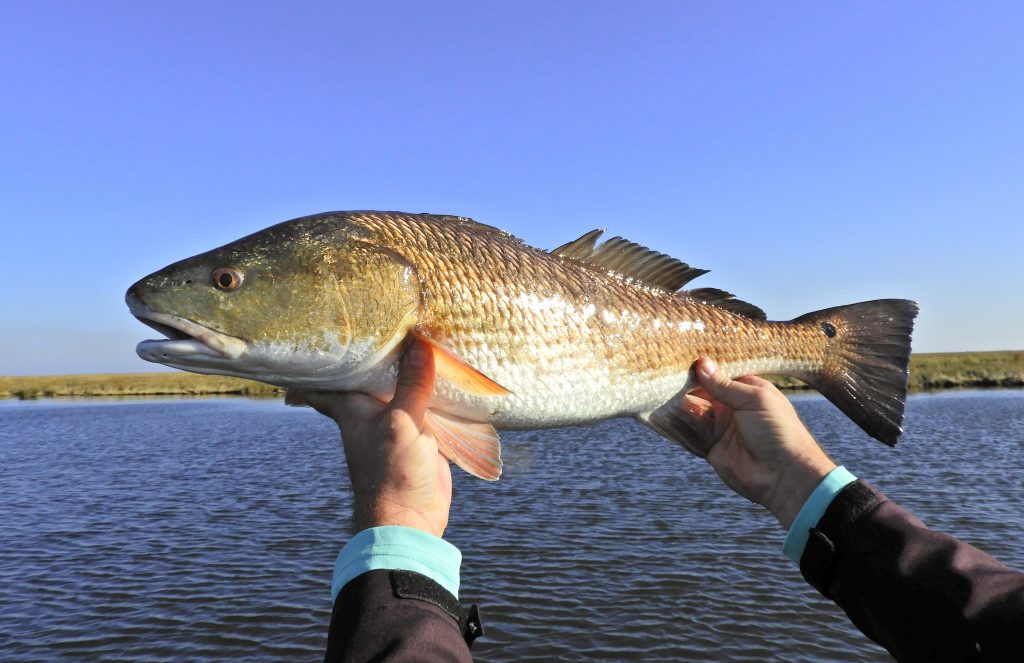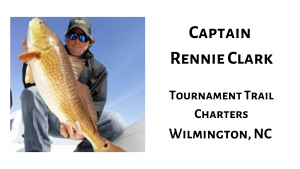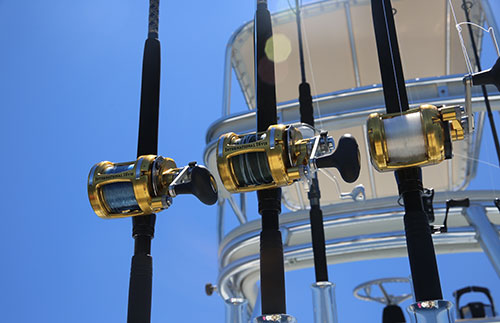Top Tips for Sight Fishing
I’m a Redfish Tournament Angler and guide that fishes in tournaments from North Carolina to Louisiana. To me, there is nothing that compares to sight fishing in clear shallow water for Redfish. That is what has led me to chase these fish all over the South  Atlantic and Gulf Coast. Each area that I fish in is different, but one thing remains the same: there is always clear water somewhere in each location I stop for tournaments. This is the first thing you have to find if you want to sight fish for Redfish.
Atlantic and Gulf Coast. Each area that I fish in is different, but one thing remains the same: there is always clear water somewhere in each location I stop for tournaments. This is the first thing you have to find if you want to sight fish for Redfish.
In some areas, clear water is easy to find. However, in other areas you have to look for quite some time to find it. On the east coast, there is one constant that you can fall back on in almost every location to find clear water and that is high tide. If you have stained or dirty water in your area, and you have tidal flats with marsh grass, then you have clean enough water to sight fish. Otherwise, you can usually find clean water at dead low water when the water stops moving. At the bottom of the low water, when the water stops moving, the silt settles to the bottom and the water considerably cleans up as it gets shallow. It helps to have light winds, but you can also find banks that are in the lee on windier days to ensure cleaner water.Once you have found clean water in an area, stealth is the key to getting close enough to see a redfish before he spooks and swims off. Even with veteran anglers, the biggest mistake I see on my boat is how much body movement and noise some anglers make while pursuing fish in shallow water. When fishing in two feet of water or less, it is important to make sure you don’t slam hatches, step on compartment lids, or drop things on the deck. Every noise you make is amplified in shallow water. Another huge mistake I see anglers make is making exaggerated body movements when on the bow of the boat looking at a fish. If a fish is coming at you and you have to put a bait in front of him, it is better to just flip the bait with your wrist than moving the rod overhead or swinging it and your arms to make your favorite cast to the fish. If you can see the fish, he can see you. Limit your movements and you will have a better success ratio.
Today, as sonars are becoming more advanced, the gain on these side and down imaging units have become more powerful and some anglers don’t know or forget to turn these units off when sight fishing in shallow water. Not only does your sonar transmit noise as it bounces off the bottom, it can actually hit the fish and scare them way off your boat.
Another thing I see a lot of new anglers doing is burning flats with a trolling motor. This is the worst thing you can do in populated areas that fish see hundreds of boats. The sound of your trolling motor has educated the fish to know “here they come again” and they vacate the flat before you even put eyes on them. Use your trolling motor to position your boat along with your shallow water anchor. If at all possible, use the wind or current to drift flats and other areas you are trying to sight fish.
Also, never chase a school of fish on the trolling motor – they will never stop. Shut it off and pole down. Eventually the fish will come back. I rarely use a push pole anymore, but if you have a small enough boat with a poling platform, this will increase your opportunities of pitching more baits to cruising or tailing Redfish.
For pursuing Redfish in the short grass, it can be much easier to get closer to the fish without scaring them on foot. You have to make sure you are on a sandy bottom to do this. Be careful as there are a lot of areas that are mud bottom with a small amount of sand over the top in which you will sink up to your chest real quick if you are not careful. I love chasing tailing redfish in the short grass at the top of the tide in the Carolinas and I have wading shoes in my boat all summer just for this occasion. The higher the tides, the better.
Look for lunar late afternoon high tides and you will have a lot more real estate to fish on these days. To me, this is the most fun way to pursue Redfish on the East Coast. Keep up with the tide levels on your tide chart so you will recognize these bigger tides. For me, in the Wrightsville Beach, NC area, that is a high tide at 5 feet or better. Every area is different, for instance, Charleston, South Carolina to Jacksonville, Florida have flood tides in excess of 10 feet. The gulf coast has a diurnal tide, which is a different tide every 12 hours. Sometimes I have been in Louisiana fishing and a tide is not stated on the charts that day. Again, every place is different. I see tailing fish in Louisiana, but that is not a place that I will pursue fish outside of my boat. My fishing areas there are mud bottom and have gators and snakes as well. The grass I am fishing for these fish is hydrilla, not spartina grass.
When pitching soft plastics to redfish in clear shallow water, make sure you are using a bait that does not displace much water when it enters the strike zone. I personally use weightless weedless hooks attached to the smallest soft plastics I can cast on the East Coast. Baits that mimic a 3-inch shrimp, minnow, or small crab are going to work the best. I use larger baits, and sometimes a lot more weight, in Louisiana fishing shallow clear water. In a lot of the areas I fish, these fish are eating freshwater panfish, shiners, and even larger crabs. Most of the time, I throw 4+ inch baits when I fish there. Keep in mind, I am fishing tournaments while there I fish from a platform 7 feet off the deck and, in most cases, the wind is blowing 20+ mph. It seems tournament day is the windiest day of the week and can be accompanied by lots of rain and bad weather that makes it difficult to pitch small, light-weight baits to fish. You have to adapt to the conditions you are fishing and use what you can put in front of the fish. To me, a rejection from a fish is better than not being able to put a bait in front of it before it disappears.
The main question I get from flats fisherman is how far to lead a redfish with a bait. The answer to that varies based on location and situation. I would recommend leading the fish farther in clear water, but leading less in dirtier water with obstructions such as spartina grass, eel grass, hydrilla, snot grass, oysters, etc. If the fish is swimming through hydrilla, you want the fish to see the bait before he disappears into the grass. You also have to keep in mind how bright the sun is and if the day is clear. On an afternoon with no clouds and bright sunlight, you have to make sure you don’t cast the bait over the fish’s head to lead him. Even your line can spook the fish while it is in the air on a sunny day. I can’t tell you how many fish I have spooked doing this. I like to use white braided line, but I have started using darker colors (even blue) in bright sunlight. White is a good contrast to the blue sky so it shows up much better in the daylight. In certain clear skinny water situations with bright sunlight, it is better to lead a fish much farther and wait until it gets to the area where your bait is before you show it to the fish. Another thing I do in pressured areas is to dead stick the bait or barely move it to get a fish’s attention and then let it sit. Some areas have been so heavily pressured that any movement of the bait will blow them out and send them off the flat.
I could go on and on about sight fishing and tips for all types of situations, but I am going to wrap it up. Overall, you have to find clean water, use stealth, and present as light of a bait as possible for that situation to have more success sight fishing for Redfish. I am sure this is not the last article I will write about sight fishing. Until next time – tight lines.
Most from this category








